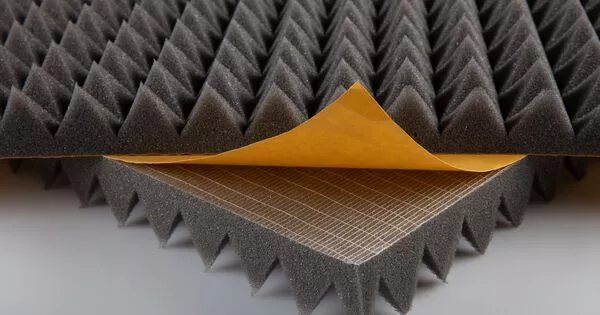Soundproofing is any method of preventing sound from propagating. It is the process of limiting or inhibiting sound transmission between distinct areas. There are numerous main methods for reducing noise: extending the distance between the source and the receiver, decoupling, utilising noise barriers to reflect or absorb the energy of the sound waves, dampening structures such as sound baffles for absorption, or using active antinoise sound generators. It is used to reduce the impact of outside noise or to prevent sound from escaping a room and disrupting neighbouring regions.
Soundproofing is often utilised to create more pleasant and private situations in residential, commercial, and industrial settings. Unwanted noise can be reduced via acoustic quieting and noise control. Through the use of distance and intervening items in the sound channel, soundproofing can minimise the transmission of unwanted direct sound waves from the source to an involuntary listener (see sound transmission class and sound reduction index).
Soundproofing can reduce undesired indirect sound waves such reflections and resonances that generate reverberation. There are various soundproofing methods and materials available, each with its own level of efficacy and applicability. Here are some examples of common techniques:
- Insulation: Proper insulation can help reduce sound transmission through walls, ceilings, and floors. Materials like mineral wool, cellulose, and foam boards are commonly used for this purpose.
- Mass-Loaded Vinyl (MLV): MLV is a dense, flexible material that can be added to walls or ceilings to add mass and block sound. It’s particularly useful for reducing airborne sound transmission.
- Acoustic Panels: These panels are designed to absorb sound and reduce reverberation within a room. They are often used in recording studios, home theaters, and noisy office spaces.
- Sealants and Weatherstripping: Ensuring that all gaps and cracks in doors, windows, and walls are properly sealed can help prevent sound leakage.
- Decoupling: This technique involves creating air gaps between walls, floors, and ceilings to prevent sound vibrations from transmitting between surfaces. Resilient channels and sound isolation clips are commonly used for decoupling.
Keep in mind that perfect soundproofing may be difficult to achieve, particularly in extremely noisy areas. The efficiency of soundproofing technologies is determined on the application and the sound frequencies to be blocked.
















